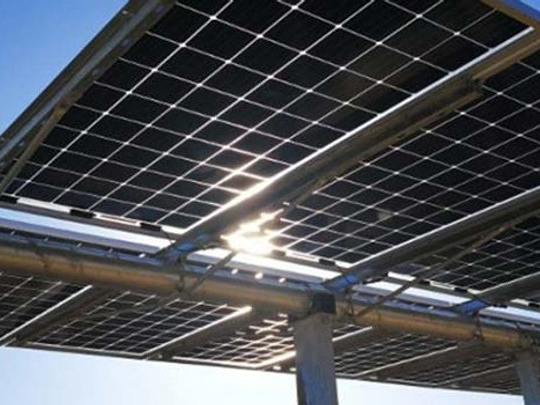Image source: Canva.com
With the rising demand for renewable energy and energy efficiency, bifacial solar panels have emerged as a game-changer in the solar industry. Unlike traditional monofacial panels, bifacial solar panels capture sunlight from both sides, increasing energy production and maximizing efficiency. But with their higher upfront cost, are they truly worth the investment in 2025? Let’s break it down.
What Are Bifacial Solar Panels?
Bifacial solar panels are designed to absorb sunlight from both the front and rear sides. While conventional solar panels only capture direct sunlight on their top surface, bifacial panels also utilize reflected light from surfaces like rooftops, ground, or white gravel.
Key Features of Bifacial Solar Panels

✔ Double-sided energy absorption – Generates more electricity than traditional panels.
✔ Higher efficiency rates – Typically 10-20% more energy production compared to monofacial panels.
✔ Durable glass design – Often made with tempered glass on both sides for extra longevity.
✔ Ideal for reflective surfaces – Works best on bright surfaces like concrete, white rooftops, or snow-covered ground.
Growing Popularity of Bifacial Solar Panels in 2025
The global solar market is shifting toward higher efficiency and better ROI, making bifacial panels increasingly popular among homeowners, businesses, and large-scale solar farms. Here’s why:
📈 Decreasing costs – Prices have dropped significantly due to mass production and improved technology.
🌍 Incentives & policies – Many governments offer tax credits and subsidies for adopting high-efficiency solar tech.
🔋 Energy storage integration – Works well with solar batteries for a continuous power supply.
🏗 Versatile installation – Ideal for ground-mounted systems, rooftops, and pergolas, enhancing energy yield.
According to industry forecasts, bifacial solar installations could surpass 40% of the global solar market by 2025 due to their superior energy output and better cost-to-benefit ratio.
Cost Comparison: Bifacial vs. Monofacial Panels
Upfront Cost
🔹 Monofacial Panels: ~$0.30 – $0.50 per watt
🔹 Bifacial Panels: ~$0.40 – $0.60 per watt
Bifacial panels are about 10-20% more expensive than traditional solar panels, but they also generate 10-30% more energy, making them a long-term value investment.
Installation Costs
While bifacial panels cost slightly more to install (due to special mounting structures that allow light reflection), the extra cost is offset by higher energy production over time.
Maintenance & Durability
🔹 Monofacial Panels: Standard maintenance, but prone to microcracks.
🔹 Bifacial Panels: More durable (glass-on-glass design), reducing wear and tear.
Bifacial panels have a longer lifespan, often 25-30 years, compared to 20-25 years for monofacial panels.
Potential ROI: Is It Worth It?
The return on investment (ROI) for bifacial solar panels depends on location, sunlight conditions, and installation setup.

🔹 Higher energy yield – Produces 10-30% more electricity, reducing payback time.
🔹 Lower payback period – ROI can be achieved within 5-7 years for most homeowners.
🔹 Better performance in cloudy weather – Absorbing diffused light improves efficiency.
🔹 Resale value – Homes with high-efficiency solar systems tend to increase in value.
For businesses and commercial projects, bifacial panels are particularly beneficial as they maximize solar production and offer higher savings on electricity bills.
Should You Invest in Bifacial Solar Panels in 2025?
✔ If you have ample space with reflective surfaces (white roofs, concrete, snow, or water), bifacial panels provide higher returns.
✔ If you’re in a high-energy-cost region, the extra efficiency leads to faster payback.
✔ If you plan a long-term solar investment, the durability and performance make it worthwhile.
❌ If your installation area lacks reflective surfaces (like asphalt roofs or shaded areas), the benefits may not be as significant.
❌ If you have a tight budget, traditional monofacial panels may still offer a solid ROI.
Final Verdict

For homeowners and businesses looking for maximum energy efficiency and long-term savings, bifacial solar panels are a smart investment in 2025. While the initial cost is higher, the increased energy production and longer lifespan make them a financially sound and sustainable choice.





